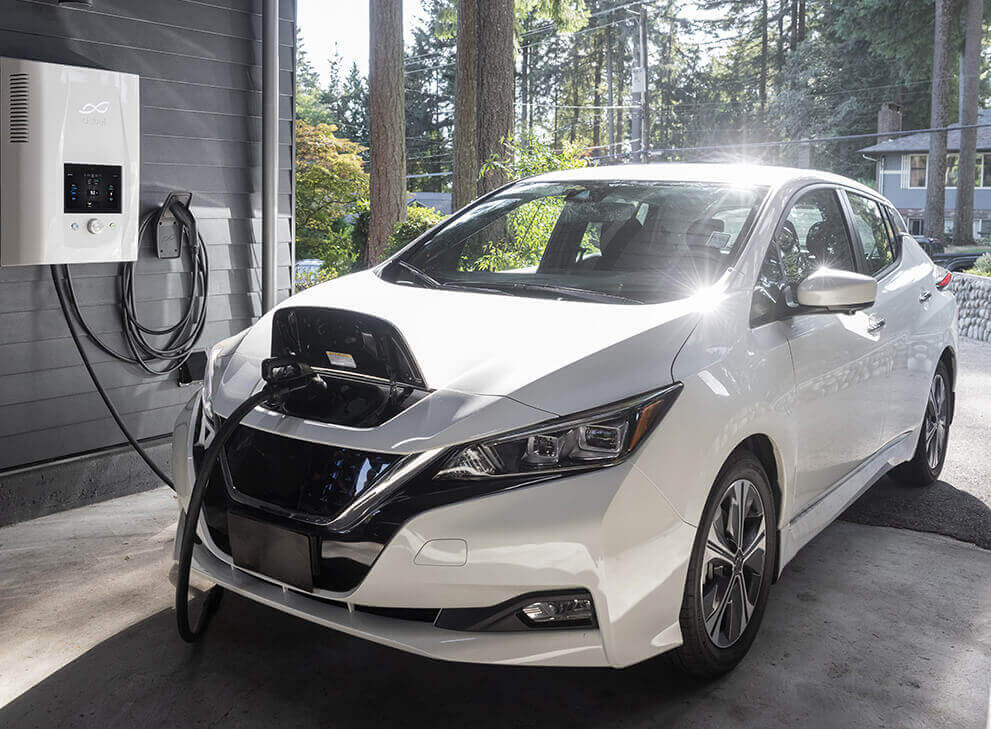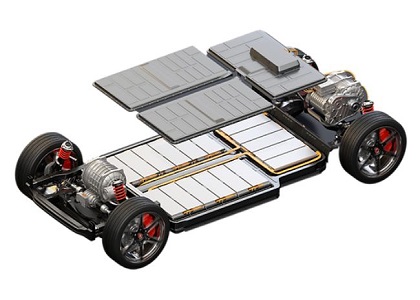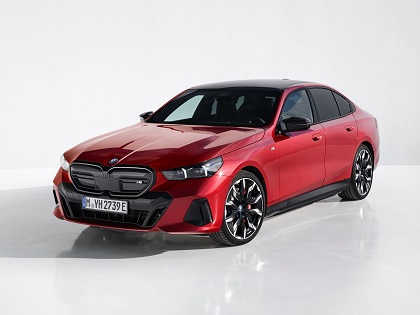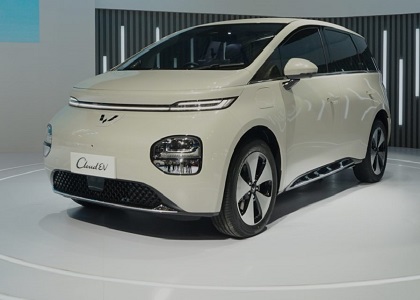
Understanding Battery Electric Vehicles: A Comprehensive Guide
A comprehensive guide to comprehending battery electric vehicles beyond the battery pack and motor, acquiring insights into the major components of an EV, and understanding its inherent advantages and limitations.
Battery Electric Vehicles (BEVs), known colloquially as EVs, and ICE vehicles share the same goal of transporting people and/or goods from one place to the other, albeit differently. An internal combustion engine uses chemical energy stored in the fuel to thermal energy and into kinetic energy to move, while battery electric vehicles converts electrical energy in the battery pack to kinetic energy stored in its battery pack to propel itself. However these differences extend beyond the fuel type and encompass different components and hardware to achieve similar goals. This article aims to enlighten readers about the working of BEVs, its components and differences from gasoline vehicles, and lastly discuss the inherent advantages and disadvantages of a BEV.
Like a combustion car which stores its energy in the form of petrol/diesel in its fuel tank, a BEV needs a storage system to store its energy which is in the form of electricity in the battery pack. A battery pack consists of individual cells that are connected in series and parallel to form modules, with each module comprising of several Lithium-ion cells. These interconnected modules are then assembled to create the complete battery pack, serving as the primary energy storage unit in a Battery Electric Vehicle (BEV). A battery pack in electric vehicles is placed on the floor. The energy stored in the battery pack of an electric vehicle (EV) is utilized to propel the car forward through the operation of an induction motor. The induction motor plays the role of an engine to move the car forward. The induction motor has two main components: a stator, the stationary part, and a rotor, the moving part. The stator consists of thin steel laminates and windings/wires that produces a rotating magnetic field (RMF) when a 3-phase current is passed through it. The rotor is usually in the form of a squirrel cage with metal bars with end rings. When a 3-phase current passes through the windings in the stator, an EMF (electromotive force) will be produced that induces current in the metal bars of the rotor which will cause the rotor to turn, thus propelling the car forward. However, most EVs today use permanent magnet synchronous motor (PMSM) which serves the same purpose of converting electrical energy into mechanical energy to drive the wheels.
Before the motor draws energy from the battery pack, it needs to convert the DC current in the battery pack to AC current to power the electric motor runs pm AC current. An invertor converts the DC current to AC current to power the induction motor. The inverter modulates the flow of current to the motor based on the throttle input from the driver. In brief, the power from the battery pack will go to the motor via an invertor which will first convert the DC current into AC current that will power the motor which transfers the power to the wheels via a single-speed gearbox in most cases. The Porsche Taycan and Audi e-tron GT are exceptions, which have a two-speed gearbox for enhanced efficiency translating into better real-world range. For single-speed gearboxes, the third reduction from an ICE vehicle’s gearbox is selected as it blends both efficiency and performance. The invertor, electric motor, and gearbox constitute an EV’s drivetrain.
Once the battery pack is low on power, it needs to be charged which is similar to refueling an ICE vehicle. The steps for charging an EV are similar to charging an electrical device such as a smart phone. Like a smartphone, an EV usually comes with a charging cable that needs to be connected to the charging port to charge the vehicle. Electric vehicles have an on-board charger which charges the battery pack and requires an external source to power it. Once the charging cable is connected, the power from the external source runs the on-board charger which will convert the AC current into DC current to charge the battery pack. The working principle is the same when charging from a three-pin, 15A socket, and a wall box charger, the latter depending on the manufacturer can come standard with the car, both of which use AC current. However on DC public fast-chargers, current from the charger bypasses the on-board charger and goes directly into the battery pack as the current from the DC fast charger is DC current. The DC-fast charging unit converts AC current from the grid into DC before the current is delivered to the battery pack. A DC fast charger takes the least amount of time followed by a wall box charger, and a three-pin socket.
The Vehicle Control Unit (VCU), known colloquially as controller, is the brain of an EV. It is a hardware unit that runs on algorithms to monitor data from around the car with the help of sensors, not limited to throttle input from the driver to regulate power from battery pack to the motor and controls regenerative braking. Regenerative braking, or regen, is a distinct feature of an EV that recovers the kinetic energy and converts it back into electrical energy to charge the battery pack. In regenerative braking, the motor will act as a generator and will convert the kinetic energy from the wheels into electricity in the stator. The current in the stator at this point is AC current which is converted to DC current in the invertor to charge the battery pack. During this process, the car slows down giving it a braking effect and it is this process that enables EVs to be driven with one pedal when possible. Lastly, regen is one of the distinct features that makes EVs more efficient compared to gasoline vehicles.
As an essential electronic unit within electric vehicles (EVs), the Battery Management System (BMS) plays a pivotal role in overseeing and managing key aspects of EV battery performance. It regulates voltage, temperature, and state of charge—essential parameters for ensuring the safe operation of the battery pack. Lithium-ion batteries present safety risks, such as fire hazards under certain extreme conditions which necessitates manufacturers to employ an effective BMS. As aforementioned, the battery pack consists of multiple modules, each comprising individual cells. These cells charge and discharge at different rates, posing challenges for monitoring battery pack performance. The BMS addresses this complexity by performing routine checks on each cell's parameters, swiftly taking corrective measures in case of anomalies. This meticulous inspection ensures the overall safety, reliability, and efficiency of the electric vehicle. The BMS performs critical functions, including cell monitoring, thermal management, cell balancing, and battery optimization, ensuring optimal performance and longevity of EV’s battery pack.
One of the crucial functions of BMS- cell monitoring involves real-time data acquisition on battery parameters such as voltage, temperature, and current. This enables close monitoring of performance metrics like State of Charge (SoC) and State of Health (SoH), providing EV owners with valuable insights for planning charging stops and maintenance. The BMS also ensures thermal management by regulating battery temperature to keep the battery pack within a safe operating range, and maximize battery performance and lifespan. Additionally, it includes cell balancing mechanisms that equalize voltage and state of charge among cells which enhances efficiency and longevity. Moreover, the BMS vigilantly monitors battery parameters to address natural cell deterioration, offering built-in protections against overvoltage, undervoltage, overcurrent, and thermal issues. This comprehensive oversight makes the BMS an essential component, ensuring the functionality, reliability, and safety of EV batteries.
With 90% fewer moving parts than Internal Combustion Engine (ICE) vehicles, electric vehicles (EVs) boast significantly reduced maintenance and operational expenses. The reliance on electricity, a more cost-effective resource, positions EVs as a financially prudent choice in contrast to their petrol and diesel counterparts. Enhanced efficiency is achieved in electric vehicles through features like regenerative braking and superior aerodynamics for a ground up electric vehicle, further contributing to their economical operation. Depending on the manufacturer, the range of an EV can be enhanced with over-the-updates to its firmware. The Noise, Vibrations, and Harshness (NVH) levels in EVs markedly diminish compared to ICE vehicles due to a lack of a noisy gasoline engine, ensuring a quieter and more comfortable driving experience. The standout advantage lies in the absence of tailpipe emissions, as EVs lack an Internal Combustion (IC) engine, thereby eliminating the carbon footprint associated with ICE vehicles.
While electric vehicles (EVs) offer numerous advantages, they are not without their limitations. The primary constraint is associated with the cost of the battery pack, constituting 40-45% of an EV's manufacturing expenses, leading to a higher upfront cost compared to traditional gasoline vehicles. In certain geographical areas, the charging infrastructure is not as widely distributed, necessitating strategic route planning during extended travels or road trips. Depending on usage patterns, the range of some EVs may prove insufficient for longer journeys, especially when coupled with sparse charging infrastructure, contributing to range anxiety among users. Furthermore, concerns arise regarding the charging times for EVs, potentially increasing travel duration on extended journeys compared to Internal Combustion Engine (ICE) vehicles, which can refuel more quickly.
However, as battery technology advances, the cost of battery packs is decreasing, contributing to the increased affordability of electric vehicles. Continuous improvement in battery technology also extends the range of EVs, allowing them to cover longer distances between charges, especially intercity travel and road trips. Additionally, with refined aerodynamic designs, EVs are becoming more efficient, enhancing their range through sleeker designs that cut through the air more effectively. Simultaneously, charging times are decreasing, facilitated by higher operating voltages. For example, the Hyundai Ioniq 5, equipped with an 800V system, can charge from 10-80% State of Charge (SoC) in just 18 minutes on a 350kW DC fast charger. Despite their limitations, EVs have proven to be a practical choice over Internal Combustion Engine (ICE) vehicles, offering benefits such as zero tailpipe emissions, lower maintenance and operating costs, low NVH levels, and robust performance. These advantages continue to fuel the growth of electric vehicle sales, positioning them as an aspirational choice for consumers.
For any inquiries or suggestions regarding the content, please feel free to reach out to us at jash@evlane.net






January 25, 2024
Category: